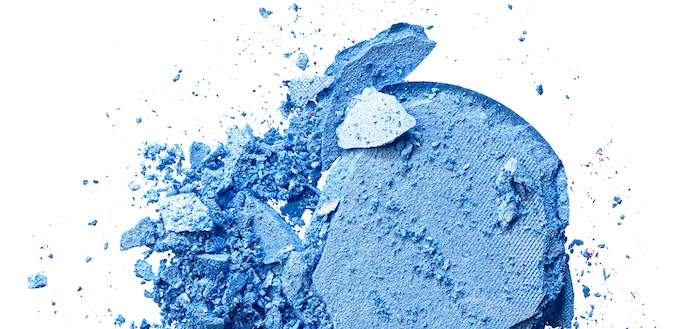Read About a New York Woman’s Talc Case Against Johnson & Johnson
Independent Testing Shows Nearly 15% of Makeup Products Tested Contain Asbestos

Talc-based cosmetics often appear in news related to asbestos contamination. Consumers could be exposed to asbestos when using contaminated blush, eyeshadow and other talc products.
The Environmental Working Group (EWG) funded testing of 21 makeup products at the end of 2020. The testing found nearly 15% of the talc products contained asbestos. EWG claims these findings prove the testing methods used by the cosmetic industry are inadequate.
Request a Free 2025 Mesothelioma Guide
Dangers of Asbestos in Cosmetics
Asbestos exposure can lead to multiple illnesses, and some people are exposed through daily use of contaminated talc-based cosmetics.
Asbestos often naturally occurs near talc. When mined, talc may contain microscopic asbestos fibers. If proper and accurate testing isn’t completed, asbestos-contaminated talc may end up in consumer products.
Some cosmetic companies unknowingly expose users to asbestos. Others may be aware of their contaminated products and yet continue to produce them.
Exposure to asbestos causes several diseases, including:
Many talc companies have been named in lawsuits due to asbestos in their products. Consumers may file claims after they are diagnosed with one of the above diseases due to talc exposure.
How Much Asbestos Was Found in Tested Products?
Of the 21 products tested, three were positive for at least one of two forms of asbestos. The exact percentage of asbestos in the positive products is unknown.
However, no amount of asbestos exposure is considered safe. Limited exposure to asbestos may still cause asbestos-related diseases. Risks of asbestos-diseases may increase with daily use of asbestos-positive products.
“How much talc is inhaled – and how much is contaminated with asbestos – is hard to know, but it only takes one asbestos fiber, lodged in the lungs, to cause mesothelioma decades later.”
-Tasha Stoiber, Ph.D., a senior scientist at EWG
According to the testing, tremolite and actinolite asbestos was found in products tested. Three of the 21 products tested positive for tremolite: two eye shadow palettes and a toy makeup kit. The actinolite was found in one of the two eye shadow palettes.
- One out of three eye shadow shades in the toy makeup kit tested positive for asbestos.
- In the two adult eye shadow palettes, 20% and 40% of the eye shadow shades contained asbestos.
Contaminated talc in powder eyeshadows may also lead to more airborne fibers, making inhalation more likely. Long-term exposure may also be likely if individuals are using the contaminated products on a daily basis.
If Talc Is Dangerous, Why Is It in Cosmetics?
Talc is used in cosmetic manufacturing to improve the look and feel of products. Talc also can absorb moisture and is an inexpensive filler for cosmetics. Due to the danger of asbestos contamination, some cosmetic companies have products available without talc.
Are Cosmetics Regulated by the FDA?
Cosmetics are not regulated by the United States Food and Drug Administration (FDA). The FDA suggests companies choose asbestos-free talc mines. However, it does not require pre-market testing of talc-containing products for asbestos.
According to the results of the EWG-funded testing, the organization believes this proves the testing methods for talc cosmetics are outdated and a hazard to human health.
The EWG has stated the FDA’s testing is not adequate for naturally occurring asbestos fibers in talc. According to EWG, the FDA regulations were designed for asbestos added to products during the manufacturing process. This type of testing does not pick up the level of contamination in talc-based cosmetics.
The insensitivity of the current suggested testing can cause asbestos exposure among consumers. The EWG suggests testing products with electron-microscopy based methods to ensure the product is safe before it’s sold.
Consumers may choose to avoid powder products containing talc to ensure they aren’t exposed to asbestos fibers.